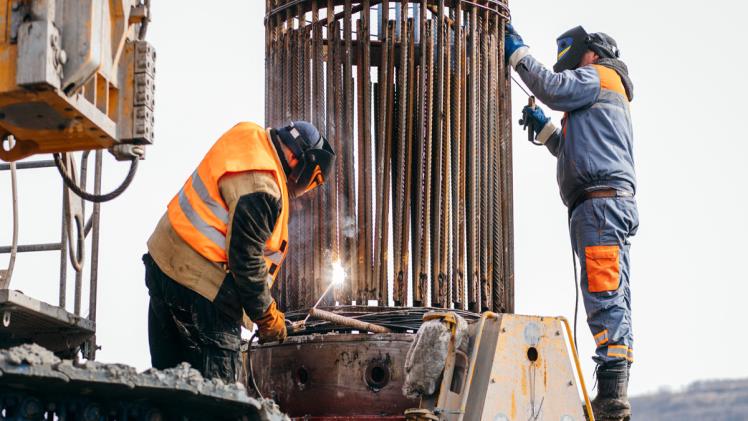There are several different types of MIG welders, but they all share the same four or five critical components.
UDO Center of equipment, we sell grinding machines, grinding stones and various tools for all types of welding work. We have a team of highly experienced professionals to give advice and consult to all customers. Please visit our welding wire products at : https://www.udo.co.th/category_product/กลุ่มลวดเชื่อม
– Power Supply Unit: This is the main box that houses all the controls of the MIG welder. It converts incoming power (usually from a household outlet or generator) into the voltage required to weld metals of varying thicknesses and adjusts the welding wire feed rate.
– Welding Gun (Torch): This is a handheld device that creates an arc to start the welding process. It supplies both the gas that protects the weld and the wire that melts the metal to create the weld.
– Grounding Clamp: A circuit is required to create a welding arc. Part of this circuit is ground. The ground clamp attaches to the metal to be welded or to a suitable metal workbench.
– Welding Wire (not shown): In the MIG welding process, current is delivered along a consumable metal wire (technically an electrode). This creates a welding arc that melts the metal and acts as a filler between the two parts being joined together.
– Gas Supply (not shown): MIG welding uses gas to create a protective shield around the weld. This prevents the entry of impurities that can cause weak spots. MIG welding gases are typically supplied in cylinders that vary in size from 20 to 300 cubic feet (cu ft). Gasless MIG welding does not require a bottle. However, the term “gasless” is somewhat misleading, as explained later in this article.
THESE THREE TYPES OF MIG WELDERS YOU SHOULD KNOW WHILE
MIG WIRE WELDERS AND OTHER HIS MIG WIRE WELDERS ARE VERY DIFFERENT IN PERFORMANCE, THE MAIN DIFFERENCE IS WHETHER THE MACHINE IS GAS POWERED OR GASLESS , or BOTH.
1. Gas
Gas MIG welding requires a separate supply of cylinder gas to form a protective shield. This flows through the welding gun via connecting hoses. Flow is controlled by a regulator on top of the bottle.
Gas cylinders are a bit inconvenient, but gas MIGs are more versatile than gasless. Can be used for welding mild steel, stainless steel and aluminum. However, gas MIG cannot be used outdoors because the shielding gas will fly away.
2. Gasless
Gasless MIG welding, also known as flux core arc welding (FCAW) or simply flux core welding, uses self-shielded wire. In other words, the electrode inserted into the weld combines with the flux that melts within the arc to form its own gas shield. It’s not completely gasless, but it doesn’t require a separate supply. This makes it easier to set up than gas MIG welding and is often recommended for beginners.
Allows you to create your own shield, allowing gasless MIG welding outdoors. While it is possible to find flux-cored wire for stainless steel and aluminum, this process tends to result in rougher and lower quality welds and is not recommended. Gasless MIG is therefore typically only used for mild steel welding.

